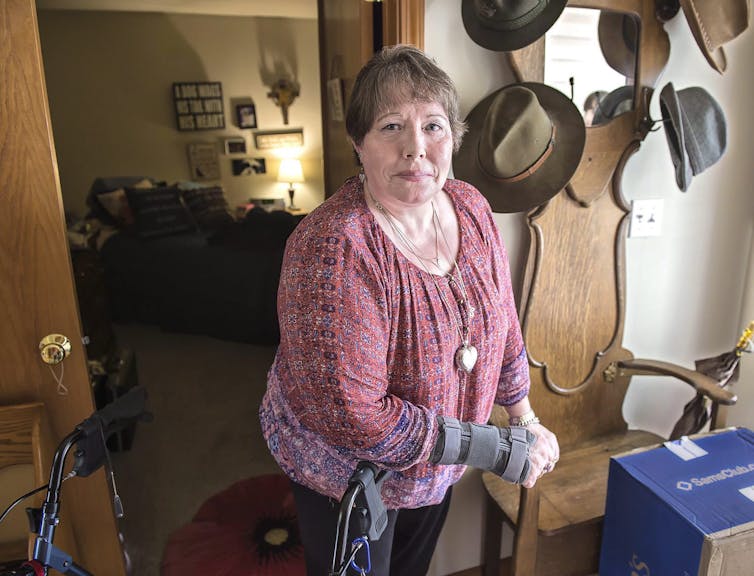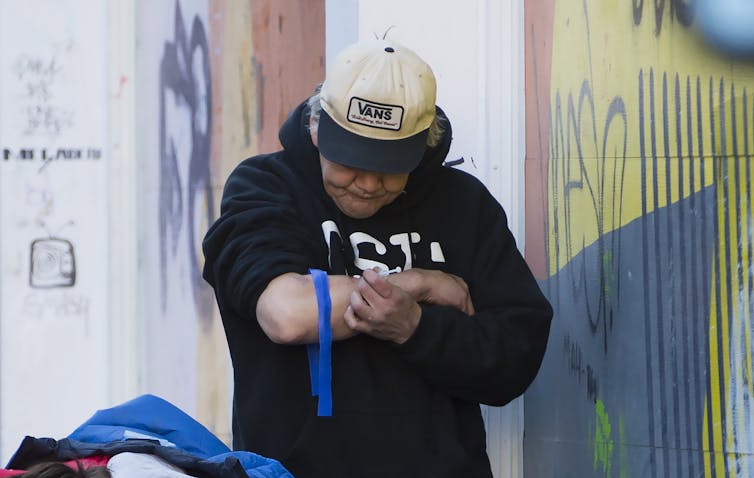Opioid-related deaths have been rising over recent years in North America and globally. New data released by the Public Health Agency of Canada reveals that more than 10,300 Canadians died as a result of an apparent opioid-related overdose between January 2016 and September 2018.
There is no question that this is tragic and requires attention.
The response by Canadian policy-makers, however, has focused largely on the over-prescription of opioids as pain medications. Interventions have included limiting prescriptions, increasing oversight of physicians and providing guidance for decreasing or tapering opioid medications.
In January 2019, Ontario announced an agreement with the federal government to inject another $100 million in fighting the crisis. These funds will likely be spent on safe injection sites, naloxone kits for emergency and medical personnel, public education about how to respond to an overdose and task forces to improve pain management.
I fear this focus on pain and overdose is a focus merely on the symptoms of a broader crisis — a crisis of under-managed mental illness and unresolved emotional trauma throughout Canada. Pain and substance use disorder are linked, but they are not synonymous. The opioid crisis is not, at its root, a problem of pain.
Meanwhile, the voices of nearly one in five Canadian adults who live with daily pain seem largely unheard.
Living with chronic pain
“Without pain meds, I cannot walk or accomplish even the simplest of household tasks. Going to the toilet will be beyond my capabilities. I have always employed narcotic pain meds to live as close to a normal life as is possible; without them I am only a burden to myself and others.”
As a physiotherapist, educator and pain researcher over the past 19 years I have heard this story, shared with me via email, countless times. In the shadow of the alarm over the opioid crisis, an important message seems to have been lost: many people live with daily pain and depend on opioid-based medications to live bearable lives.

Many people find that opioid medications such as codeine, OxyContin, morphine or in some cases even fentanyl, can be effectively used in combination with other therapies like exercise, meditation or psychological counselling to maintain a tolerable quality of life.
Through no fault of their own, these people are now described in the same breath with sufferers of substance-use disorders. And they find themselves in the middle of a largely North American tug-of-war between policy-makers, doctors, pharmaceutical companies and the public. Many of them find themselves unable to access the prescription opioids they need to live bearable lives.
Record number of opioid deaths
When alarms were raised in 2015 about the growing rate of opioid overdose deaths, the discourse at the time almost exclusively focused on manufacturers of opioid-based pain medications like Purdue Pharma, and the doctors that prescribe them.
The arguments were that Purdue Pharma’s aggressive marketing of the powerful opiod painkiller OxyContin as non-addictive, along with lax prescribing standards, was the cause of the crisis. The response was swift — from creating new prescribing guidelines and limitsthrough to a very real attempt by Oregon lawmakers to eliminate opioid prescription altogether in 2018.
While there is merit to these arguments, making the opioid crisis almost exclusively about pain has given policy-makers license to focus on dangerous metrics. Most notably, many focused on counting the total number of opioid prescriptions.
Prescriptions of opioids have declined — from 21.7 million in 2016 to 21.3 million in 2017 — and some may laud this decline. However, opioid-related poisonings, at least according to available data, have not declined in turn.
Meanwhile, the global burden of chronic pain has increased steadily since at least 1990.
So far it seems we are losing on both fronts — opioid poisoning continues while the burden of pain increases.
Vending machine opioids
The opioid crisis needs to be understood in the context of a diagnosable health condition now known as opioid use disorder (OUD). Chronic pain, on the other hand, is best thought of as an umbrella disorder — most commonly defined by the duration of pain — that can take many forms.
OUD is partly a disease of impaired impulse control, characterised by an inability to stop using opioids even when faced by clear evidence of harm. While it can affect people from any background, there are increasingly clear connections between OUD and environmental factors such as homelessness, poverty and interpersonal, intergenerational and childhood traumas.
I recently explored data on access to mental health care provided by Mental Health Americaand compared that to data from the Milliman Group on OUD prevalence and found that states with greater access to mental health care also had the lowest prevalence of OUD.

Not surprisingly then, since the introduction of opioid-prescribing guidelines in 2017 we can see a shift in behaviour of those with unmanaged OUD. For example, recent trends have shown that the primary substance in opioid-related overdose deaths is now illicit fentanyl, a drug that was rarely prescribed by physicians even before the crisis started.
In 2018, cocaine overtook opioids as the leading cause of overdose deaths in Newfoundland.
In a strange twist, forcing people with unmanaged OUD to riskier street drugs has been so devastating that Vancouver has seriously considering installing opioid vending machines.
This means we are facing a very real situation in which some people can access opioids through a vending machine while those with uncontrolled pain cannot do so through their physician.
Let’s invest in mental health
The good news is that Ontario’s $100 million in government funds could have real impact if properly directed.
For example, advances in pharmacogenetics towards personalized medicine mean it may become routine care for doctors to prescribe the type and dose of opioids that will be most beneficial based on a patient’s genes. This line of research is also expected to improve doctors’ ability to identify those most vulnerable to substance use disorder through routine clinical screening.
This will help us get the right treatment to the right person at the right time and avoid potentially harmful treatments for those who may be at risk.
Other strategies could include investing in mental health services especially for at-risk youth. These services could arm them with resources needed to cope with trauma and stress and ensure access to alternative pain-management strategies such as physical therapy, mindfulness or cognitive behavioural therapies.
The focus on opioid prescriptions as a metric of success in the opioid crisis has not been successful. We need to think about a world after the opioid crisis has passed — to ensure that mental health services are available and that those who require opioids for intolerable pain have options.
If you or someone you know is experiencing severe distress, the Canadian Mental Health Associationor your local distress centre are good resources for help and support.
Author: Associate Professor, School of Physical Therapy, Western University
Credit link: https://theconversation.com/the-opioid-crisis-is-not-about-pain-112296<iframe src="https://counter.theconversation.com/content/112296/count.gif?distributor=republish-lightbox-advanced" width="1" height="1"></iframe>

